|
Scientific Instruments Reach for
Collectibility
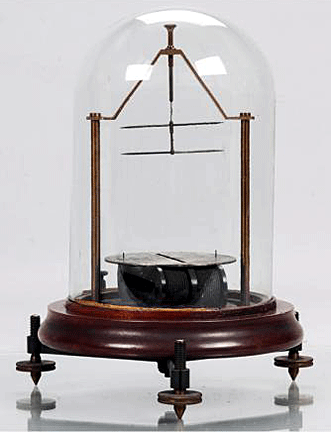 We live in a highly technical world, filled with all sorts of
gadgets. But when people think of antiques, they naturally picture
ornate Chippendale chairs and Rococo Revival sofas, Tiffany lamps
and fine porcelain. Few think of scientific and technical
instruments. Today, the market for these items, once used by a
privileged few to further scientific and technical discoveries, is
now open to everyone. We live in a highly technical world, filled with all sorts of
gadgets. But when people think of antiques, they naturally picture
ornate Chippendale chairs and Rococo Revival sofas, Tiffany lamps
and fine porcelain. Few think of scientific and technical
instruments. Today, the market for these items, once used by a
privileged few to further scientific and technical discoveries, is
now open to everyone.
On September 9, Gray’s Auctioneers of Cleveland, Ohio, will hold an
important auction of 246 different lots of scientific instruments, a
large collection of which they’re selling to benefit the Case
Western Reserve University’s Dayton Miller Scholarship Fund. There’s
something for collectors at all economic levels and stages of
collecting, from novice to veteran.
A boutique company with auctioneers licensed by the State of Ohio,
Gray's holds live auctions every month which reach the world through
our global online partnerships. Debra Gray and Serena Harragan,
co-founded the company and are its two primary auctioneers.
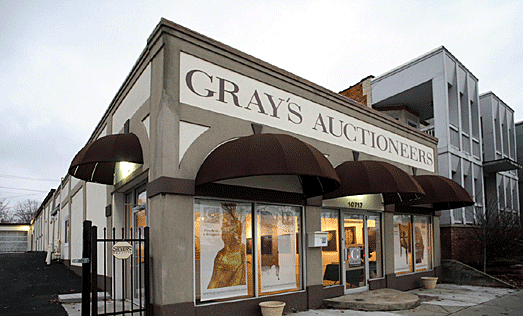
Highlights include a dazzling array of instruments from two
prestigious Ohio collections. One of the most important items up for
bid as Lot 1 is a Tesla Coil. Estimated at $800-1,200, it’s one of
the 40 tesla coils built by G.B. Schneeberger. With a suitable high
voltage AC supply condenser and spark gap, this Tesla coil
supposedly produced a 40-inch electrical streamer.
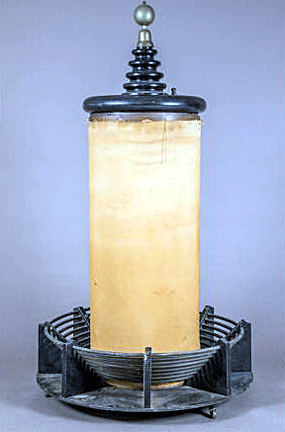 A Tesla coil is an electrical resonant transformer circuit invented
by Nikola Tesla around 1891. It’s used to produce high-voltage,
low-current, high frequency alternating current electricity. Tesla
experimented with a number of different configurations consisting of
two, or sometimes three, coupled resonant electric circuits. He used
these coils to conduct innovative experiments in electrical lighting
phosphorescence generation, high frequency alternating current
phenomena, electrotherapy, and the transmission of electrical energy
without wires. Today their main use is for entertainment and
educational displays. A Tesla coil is an electrical resonant transformer circuit invented
by Nikola Tesla around 1891. It’s used to produce high-voltage,
low-current, high frequency alternating current electricity. Tesla
experimented with a number of different configurations consisting of
two, or sometimes three, coupled resonant electric circuits. He used
these coils to conduct innovative experiments in electrical lighting
phosphorescence generation, high frequency alternating current
phenomena, electrotherapy, and the transmission of electrical energy
without wires. Today their main use is for entertainment and
educational displays.
Another important item up for auction in Lot 4 is a Holtz-Toepler
Electrostatic Generator built by Central Scientific of Chicago in
the late 19th/early 20th century. Used in early X-ray photography,
it’s estimated to sell for $300-500. August Joseph Ignaz Toepler was
a German physicist known for his experiments in electrostatics. He
developed what he called the “Toepler Machine,” an electrostatic
influence machine in 1865 for use in X-ray photography. Wilhelm
Holtz later produced an improved version.
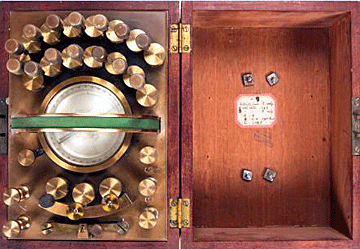 A Wheatstone Bridge used in the late 19th century to measure unknown
electrical resistance by balancing two legs of a bridge circuit, one
leg of which includes the unknown component. The primary benefit of
a Wheatstone bridge is its ability to provide extremely accurate
measurements. Invented by Samuel Hunter Christie in 1833 and
improved and popularized by Sir Charles Wheatstone in 1843,
scientists first used it for soil analysis and comparison. It’s
estimated to sell for $500-700. Though this one refers to Lot 72,
there are several up for auction. A Wheatstone Bridge used in the late 19th century to measure unknown
electrical resistance by balancing two legs of a bridge circuit, one
leg of which includes the unknown component. The primary benefit of
a Wheatstone bridge is its ability to provide extremely accurate
measurements. Invented by Samuel Hunter Christie in 1833 and
improved and popularized by Sir Charles Wheatstone in 1843,
scientists first used it for soil analysis and comparison. It’s
estimated to sell for $500-700. Though this one refers to Lot 72,
there are several up for auction.
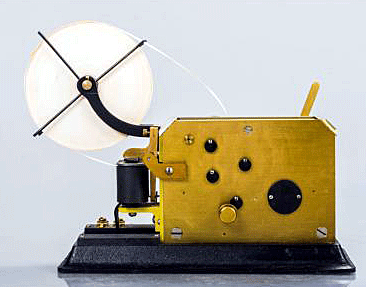 There are also several lots of items used in early electronic
communications, including a Telegraph Pen Register with Tape Roll.
By the end of the 19th century, telegraphers used pen registers to
record pulsed electrical signals, and eventually they used them for
recording the phone numbers dialed from a particular location.
Today, sophisticated pen registers are being used for surveillance.
This particular one, Lot 95, made by J.H. Bunnell & Company of
Brooklyn, New York at the turn of the 20th century, has an estimated
selling price of $400-600. There are also several lots of items used in early electronic
communications, including a Telegraph Pen Register with Tape Roll.
By the end of the 19th century, telegraphers used pen registers to
record pulsed electrical signals, and eventually they used them for
recording the phone numbers dialed from a particular location.
Today, sophisticated pen registers are being used for surveillance.
This particular one, Lot 95, made by J.H. Bunnell & Company of
Brooklyn, New York at the turn of the 20th century, has an estimated
selling price of $400-600.
Jesse Bunnell, founder of J.L. Brunell and Company, a firm that
manufactured telegraph equipment, was born a year before Morse's
invention. He became a champion telegrapher and wartime telegraph
operator. After the Civil War, he established his company in 1879 at
age 35.
He received a patent on the 15th of February 1881 for his steel
lever key, stamped from one piece of steel, with minor machining
required. An example of this type of telegraph key from the late
20th century is Lot 98, estimated to sell for $20-40.
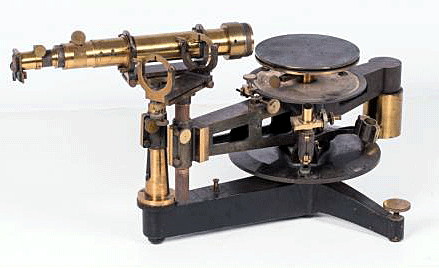 The auction also features a large collection of telescopes,
microscopes and spectroscopes including, a large spectroscope used
to measure the properties of light over a specific portion of the
electromagnetic spectrum. As the most expensive item in the auction
at Lot 119, this spectroscope, estimated to sell for $2,000-4,000,
was made by Société Genevoise of Geneva, Switzerland at the turn of
the 20th century. The name of the firm was formerly "Societe
Genevoise d'Instruments de Physique", but the company referred to
themselves as the "Societe Genevoise.” Founded in 1866, it
manufactured many products, but particularly precision instruments. The auction also features a large collection of telescopes,
microscopes and spectroscopes including, a large spectroscope used
to measure the properties of light over a specific portion of the
electromagnetic spectrum. As the most expensive item in the auction
at Lot 119, this spectroscope, estimated to sell for $2,000-4,000,
was made by Société Genevoise of Geneva, Switzerland at the turn of
the 20th century. The name of the firm was formerly "Societe
Genevoise d'Instruments de Physique", but the company referred to
themselves as the "Societe Genevoise.” Founded in 1866, it
manufactured many products, but particularly precision instruments.
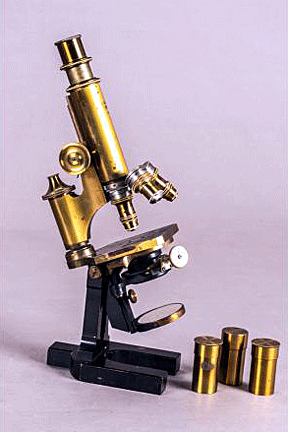 The second most expensive item up for auction as Lot 130 is a
handsome brass Zeiss Microscope, estimated to sell for $1,000-2,000.
Manufactured in the early 20th century, and including slides and
accessories, it came from the Peabody Museum Association and
features its label. Equipped with an Abbe condenser with a swing out
lower element, a triple nose piece and ungraduated draw tube, the
microscope comes complete with a wooden case, four objectives—a 'K'
immersion objective with connection collar, a Zeiss 'F' objective, a
Bausch and Lomb 1/6 inch 0.82NA objective, and a Bausch and Lomb 2/3
inch 0.25NA objective—plus two eyepieces, three substage disk
diaphragms, a camera lucida of Chevalier-Oberhausen Pattern, stage
clips, a jointed substage mirror, and a wooden box of about 15
prepared slides. Albert P. Morse, curator of Natural History of the
Peabody Museum from 1911-1936, originally owned it. The second most expensive item up for auction as Lot 130 is a
handsome brass Zeiss Microscope, estimated to sell for $1,000-2,000.
Manufactured in the early 20th century, and including slides and
accessories, it came from the Peabody Museum Association and
features its label. Equipped with an Abbe condenser with a swing out
lower element, a triple nose piece and ungraduated draw tube, the
microscope comes complete with a wooden case, four objectives—a 'K'
immersion objective with connection collar, a Zeiss 'F' objective, a
Bausch and Lomb 1/6 inch 0.82NA objective, and a Bausch and Lomb 2/3
inch 0.25NA objective—plus two eyepieces, three substage disk
diaphragms, a camera lucida of Chevalier-Oberhausen Pattern, stage
clips, a jointed substage mirror, and a wooden box of about 15
prepared slides. Albert P. Morse, curator of Natural History of the
Peabody Museum from 1911-1936, originally owned it.
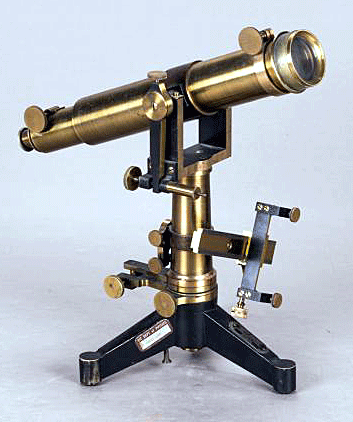 One of the most handsome pieces up for auction is Lot 124, a brass
Laboratory Table Telescope, also made by Société Genevoise of Geneva
in the late 19th Century, estimated to sell for $1,500-2,500. One of the most handsome pieces up for auction is Lot 124, a brass
Laboratory Table Telescope, also made by Société Genevoise of Geneva
in the late 19th Century, estimated to sell for $1,500-2,500.
Besides being used for scientific research, the Bausch and Lomb
Magic Lantern projector in Lot 200A, was also used by those who
could afford it for home entertainment. Estimated to sell for
$200-400, it features a Model B Balopticon, complete with projection
lens, condensers and carbon arc light source with bellows. And to go
with projector, buyers can also bid on a collection of 'New' Old
Stock Magic Lantern Slides, estimated to sell for $200-400, from the
turn of the 20th century. Lot 204A consists of four packages of
twelve slides measuring 2 1/8 x 6 3/4 inches with four circular
images 1 7/16 inches in diameter on each slide, along with seventeen
packages of slides measuring 1 9/16 x 5 15/16 inches with a variety
of image formats, all in their original wrappers.
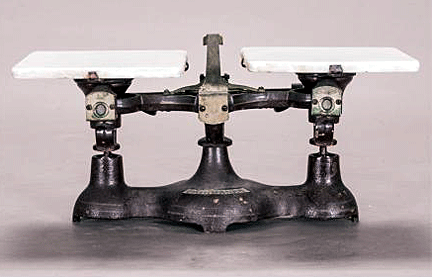 Lot 147 is a Laboratory Platform Scale, made by the Fairbanks Scales
Manufacturing Company from the early 20th century, estimated to sell
for $20-40. Two brothers Thaddeus and Erastus Fairbanks, founded E.
& T. Fairbanks Company in 1830 in St. Johnsbury, Vermont. Through an
arrangement of levers, Thaddeus Fairbanks, a wagon maker, was able
to reduce the amount of weight needed to counterbalance a load when
weighing it. He applied for a patent for his first scale in 1830. By
the Civil War, Fairbanks' scales were the best known American
product in the world. Lot 147 is a Laboratory Platform Scale, made by the Fairbanks Scales
Manufacturing Company from the early 20th century, estimated to sell
for $20-40. Two brothers Thaddeus and Erastus Fairbanks, founded E.
& T. Fairbanks Company in 1830 in St. Johnsbury, Vermont. Through an
arrangement of levers, Thaddeus Fairbanks, a wagon maker, was able
to reduce the amount of weight needed to counterbalance a load when
weighing it. He applied for a patent for his first scale in 1830. By
the Civil War, Fairbanks' scales were the best known American
product in the world.
In 1867, Fairbanks produced 4,000 scales a month. The U.S. Post
Office alone ordered 3,000 postal scales in various capacities. The
company filled the order in just eight days. By 1882, E. & T.
Fairbanks produced over 80,000 scales a year. By 1897, the company
held 113 patents for improvements and inventions in weighing.
Fairbanks offered its customers 2,000 standard model scales, yet
made as many as 10,000 different models and custom systems.
<
Back to Antiques News Archives
Next Article > |
